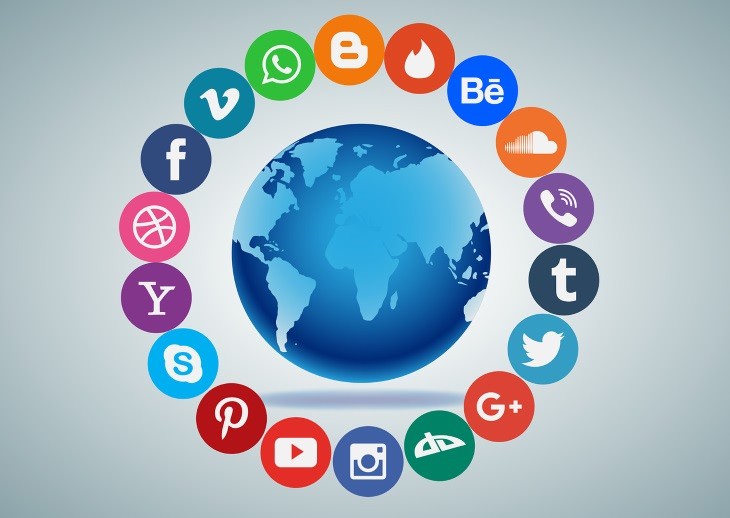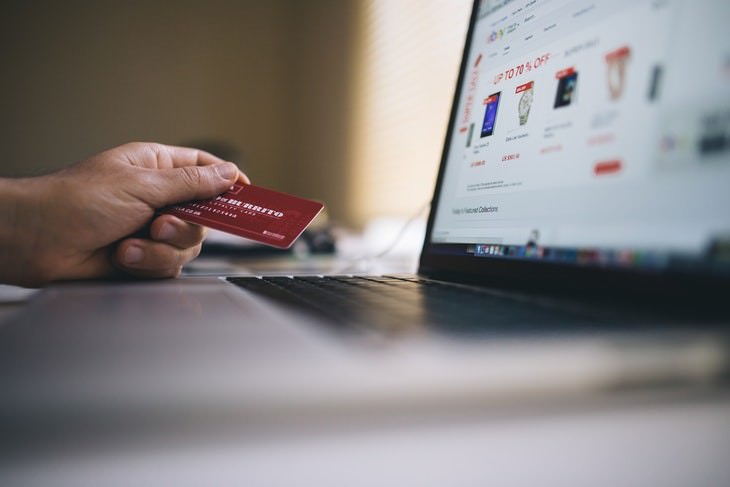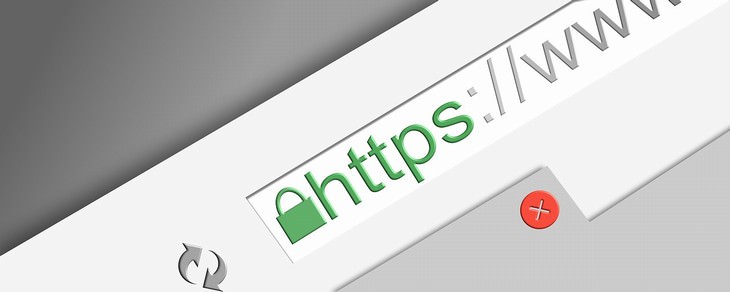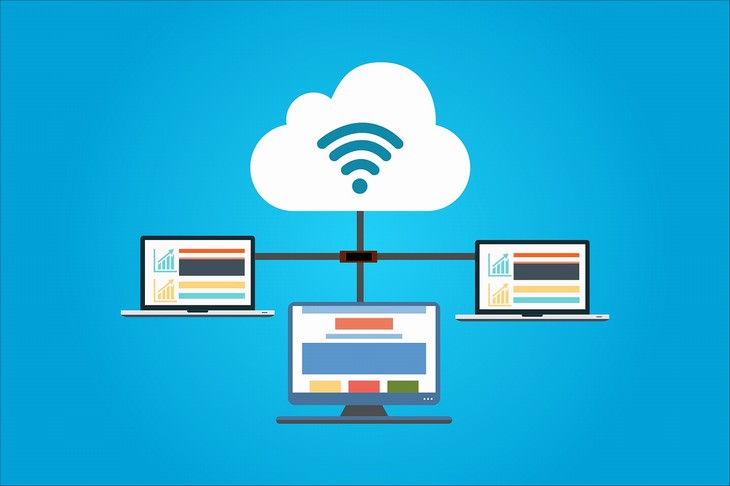1. Web Browser
Every time you’re accessing the Internet to search for something or visit a website, you’re using a web browser. Browsers are pre-installed or downloaded software the task of which is to help you navigate through the Internet. Most browsers are free, and you can have more than one browser on your smartphone or computer.
Some of the most popular web browsers are Chrome, Safari, Firefox, and Internet Explorer.
2. URL
URL is an acronym for the term “Uniform Resource Locators”, which, in essence, is an address that your browser uses to find a specific file or webpage on the Internet. These addresses are everywhere on the Internet and in real life. Every time you click on a link on Google, for example, it takes you to a new URL address via a link.
Nowadays, anything starting with ads to business cards contain a URL, which usually looks something like this: https://www.ba-bamail.com/. This can be shortened to www.ba-bamail.com, as your browser adds the https:// part called a protocol automatically. As for the ending, it can also be different depending on the type of website you’re visiting: .com, .net, .edu or .org and many others exist.
3. Web page
A web page is any window displayed through a browser that has a specific URL address. When browsing through the Internet, you’re skipping from one webpage to another, much like you would through a page in a magazine. Webpages can contain a variety of different content, such as text, images, videos, links, and advertisements.
Unlike a magazine page, however, the elements of a webpage are dynamic and interactive: you can scroll through the page or click on specific areas that will expand more information or direct you to other related pages. Several related web pages can make up a website.
4. Blog
Think about a blog as an online version of a writer's column. Anyone can start a blog, and you can find blogs written both by amateur and professional writers on a vast variety of subjects starting from sports commentary to gossip to tech tips and everything in-between.
Blogs can be a good source of information, but they can also be not so credible, so always be critical and think about whether or not the author is qualified enough to give you advice in a specific field. Like a writer’s column, blogs are often written in a more informal style and are very personal, and you can often comment on a blog post in the comments section. Many blogs today are very highly developed and serve as a source of income for their authors.
5. Social Media
Any online media outlet that promotes interaction with other users can be called social media. These sites are free to join, and many of these sites have millions or even billions of users that can connect and interact with each other through a specific social media outlet. Facebook and Twitter are some of the largest social media sites out there, but there are a lot of others, too.
YouTube, LinkedIn, Instagram, Google+, Pinterest, Tumblr, Snapchat and Reddit are all popular social media sites as well. When selecting a social media to join, ask your friends which one they use the most and decide what content you prefer to watch: if videos are your jam, YouTube is your best bet, but if you’re more into sharing photos or writing your thoughts, Instagram and Twitter respectively are best for you.
Apart from connecting with friends, social media offers all kinds of entertaining and informative content. Many public officials, community centers and businesses have official social media pages nowadays, which can be very useful. At the same time, beware of hackers and protect the information you share with others by managing privacy settings on your page.
6. E-Commerce
Electronic commerce sites, also called e-commerce, are online businesses that enable their customers to make purchases through a website. E-commerce has exploded in the past few years, and every day, billions of dollars are spent online.
E-commerce sites can either belong to a specific brand and offer a certain kind of goods, or it can be a retailer that usually offers a variety of different goods produced by other companies. eBay and Amazon are some of the most famous online retailers that sell just about anything, but nowadays, most businesses, starting from clothing brands and ending with pharmacies or grocery shops have websites as well.
When shopping online, you will have to enter credit card information or your PayPal information. Before purchasing something from an e-commerce website, make sure their webpage is secure, which we will teach you about below.
7. https:// and https://
Hypertext Transfer Protocol, which is usually shortened to HTTP is a tool that ensures all the content and data for a specific webpage are shown and work correctly in your web browser.
An improved version of this protocol is HTTPS (Hypertext Transfer Protocol Secure). Webpages that begin with “https://” have an extra layer of encryption that protects your personal information and passwords from being accessed by others.
This is especially important for e-commerce websites, governmental sites, and online banking because on these sites you use your ID and payment information. So, to know that a web page is secure, look at the URL address of the website and make sure it starts with an “https://” instead of just “https://”.
8. Spam Emails and Email Filters
Spam is a term that means unwanted emails, basically trash. Spam is annoying and often dangerous, and there are 2 main types of spam emails:
1. Advertising.
2. Emails sent out by hackers aiming to steal your passwords and personal data.
Most email services today have a filtering system that, for lack of another word, filters out any important emails you’re getting from spam and puts all of these potentially useless emails into a folder titled something like ‘spam’, ‘trash’, etc.
The main problem with this filter system is that it’s imperfect, and some important emails may sometimes end up in the spam folder, and, what’s more dangerous, emails from hackers may appear in your incoming emails instead of the spam folder.
That’s why it’s always important to be wary of the emails you receive, even if they arrive from your bank or a person you know. For example, your bank or government officials should never ask for your bank details or social security number via email. If an email looks suspicious, don’t click on any links it contains: this may endanger your personal information or passwords.
9. Authentication and Encryption
When you’re entering your email or login name and password to access your account on a site, you’re going through a process called authentication. Some sites and apps also offer fingerprint scanners and face authentication. This process is made easy for the users, you, that is, but behind the scenes, it’s a complex process that is aimed to protect your data and personal information.
This protection system is called encryption, and what it does is scrambles your data following complex mathematical patterns so that it’s protected from eavesdroppers. Businesses and social media sites alike use encryption, and it makes sure your personal information and banking information is kept private and safe.
10. Cloud Computing
Cloud computing refers to any storage or software that exists online and you don’t need to download and install in on your computer. Essentially, when you’re using your email, for example, you’re using software and storage space that exists only on the Internet, also called “the cloud”, and not actually downloading each email to your computer or smartphone.
You can access the cloud storage through your browser or via an app. But your email isn’t the only instance of cloud computing. Many services, such as iCloud by Apple or Google Drive, you guessed it, by Google let you store your files, photos, and other media on virtual storage space and use online software to share or change these files.
Cloud computing is very convenient, as it allows you to access your data from multiple devices at the same time without sending it to that specific device. Apart from that, cloud computing lets multiple people from different corners of the Earth work on the same project simultaneously, which definitely enables collaboration on a whole new level.










